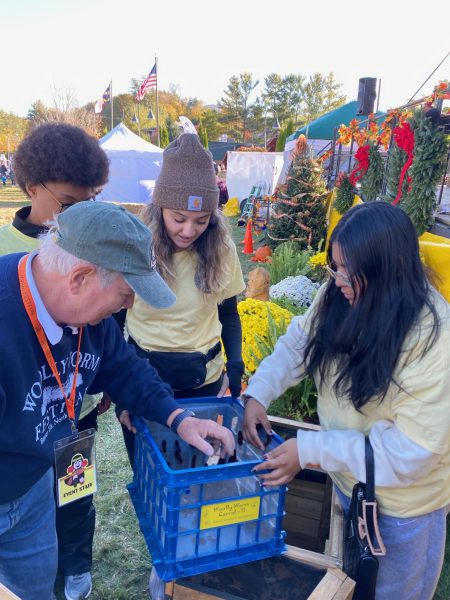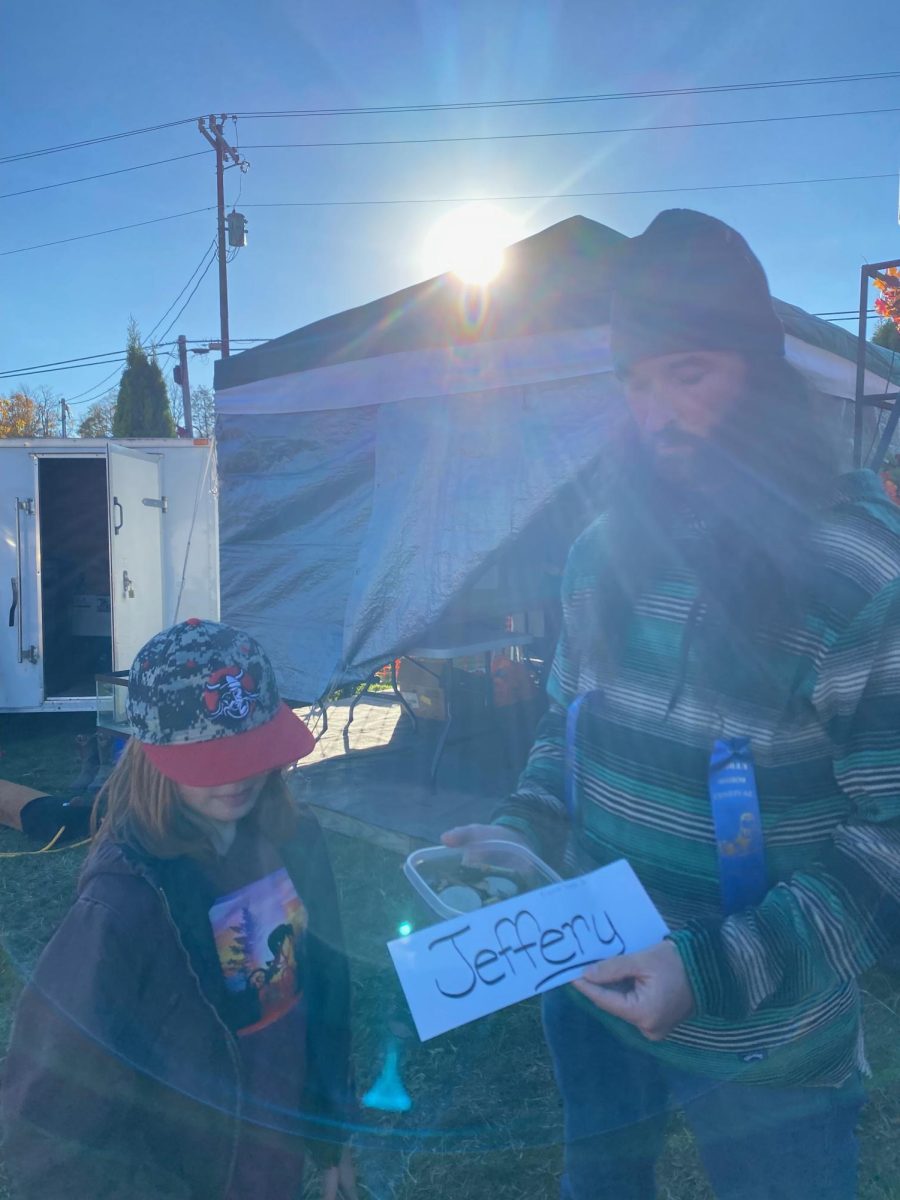For yet another exciting year, the Woolly Worm Festival winner prophesied the approaching winter’s forecast for the High Country. The prophet, you may ask? The one and only, Jeremy the worm.
Beginning nearly 50 years ago, the Woolly Worm Festival has been an annual delight that many people in the High Country may keep on their calendars, marking every third weekend of October. Kiwanis Club and Avery County members organize the festival, bringing in well over 20,000 “worm lovers” each year to experience rows of crafty vendors, various tasty food trucks, live entertainment and the highly anticipated worm races.
All festival proceeds are returned to the community to enhance schools and children’s programs, and promote business and tourism in Avery County, according to the official Woolly Worm website.
According to legend, the 13 bands on the woolly worm, also known as the woolly bear caterpillar, represent the 13 weeks of winter. Brown bands indicate a mild week and black bands indicate a cold, snowy week. Because every woolly worm has different colors, the Woolly Worm Festival holds races to determine which worm makes the forecast.
After Saturday’s eight hours of races, Jeremy the worm triumphed, forecasting the first few weeks of winter to be heavy and cold with snow, eventually warming up for a month or so, then freezing again at the end of the season. Worm owners, Brock and Maxton Wright, beamed with glory at their unexpected victory and their cash prize of $1,000.

“This morning was super cold. We’d been here since 9 a.m. and we almost left because I was like ‘If it’s going to be like this, I can’t do this.’ And the lines for people to sign up to race worms were ridiculous. So I almost backed out, but we suffered through it — and obviously, it was worth it,” Brock Wright said.
For the Wrights, this was their first year at the festival, but said they’re both excited to return next year.
Though most Woolly Festival goers were from Appalachia, people trekked from Texas, Florida and New York to see the woolly worms.
“It’s small-town America at its best. It’s funky, it’s different, it’s unique. I love to see the families having a wonderful family weekend together,” said Mary Jo Brubaker, festival chairperson and longtime member of the Kiwanis Club, a non-profit whose purpose is to serve the youth of Banner Elk.
Brubaker has been chairperson for 10 years and festival supporter for 17.
“Earlier, I looked out from the school, and all these people were cheering on worms. What can you say? It’s hard when you have your nose to the grindstone from day to day to find good, wholesome fun.” said Brubaker.
If you couldn’t make it to this year’s Woolly Worm festival, fret not. October 19-20, 2024 offers another chance to embrace these charming caterpillar’s weather wisdom.

